- Home
- Gary Paulsen
The Rifle Page 3
The Rifle Read online
Page 3
He wheeled the horse to a stop and slid off. Whoever they were, they weren’t British, and when one of them stepped forward Byam faced him openly.
“Do you have a name?” the green-coated man asked.
“Do you?” Byam said by way of an answer. He reloaded while he spoke, seating the ball. He was not yet certain the British soldiers weren’t coming and he wanted to be ready if they should suddenly burst upon the scene.
“I am John,” the man said and Byam grinned.
“I am as well.”
“Are you a loyalist?”
Byam shrugged. “I don’t know. I’ve been in the forest and don’t know the names.”
“Do you favor the British or the fight for independence?”
“I know nothing of this independence you speak of, but I do not favor the British.” Byam looked back the direction he’d come. “There are some after me.”
This caused a stir in the men. They quickly led their horses out of the clearing into the brush at the sides except for the leader, who stayed with Byam and asked many questions about the British—how many, how they were armed, how mounted, why they were after Byam. And here Byam decided it was all right to tell the truth.
“I shot an officer, that’s why they chase me.” He quickly told the story of Bainbndge being hanged and how he had fired.
“How far?” the leader asked. “I know—knew Bainbridge well. He was a good friend who fed me often and I know his place. Where were you and where was the officer when you fired?”
Byam told him.
“That’s two hundred paces if it’s a foot,” the leader said. “Are you certain?”
“I have had the rifle but one day and do not know it well yet, but I can tell you that I have never seen or heard of a sweeter one.”
“May I see it?”
Byam held for a beat and then nodded. He was completely surrounded by men with rifles and guns. If they chose to take him it would be over in a second. He handed the rifle over.
The man nodded, held the rifle for a moment, and then handed it back without looking at it. He hadn’t cared about the rifle so much as the fact that Byam would hand it to him—a kind of test.
“Who are you?” Byam asked, taking the rifle back into his hands. “And why do you fight the British?”
“We are volunteers—McNary’s Rangers. I am McNary. And we fight the British for independence—for a free America.”
Byam was surprised. “How did this come about? America without England? How can that be?”
“How long were you in the western forests?”
Byam frowned, thinking. “Two years and a bit more. I came out once to go to a trader, but there was no talk of fighting the British.”
“Well there is now. And like it or not you’re in the thick of it—killing a British officer. They’ll be hunting you hard.”
Byam looked back the way he had come. “I’m not an easy man to catch.”
“Still, they’ll come for you. Why not ride with us?”
“You?”
“What’s against it? We eat when we can, fight when we can—and there’s safety in numbers. We’re a hard-moving, hard-fighting set of volunteers.”
“Where are you bound for?”
“South. General Washington is down by New York and we thought to join him there and help the cause. We could use another rifle, especially if you can shoot the way you say you can.”
“Is there a saddle for me? I had to leave mine when they shot my horse.”
“A saddle, cup, spoon, and bowl—and all the dry powder and pure lead you’ll need.”
“Well then, done and done,” Byam said. “It sounds right.”
And so it proved to be, at least for a time. Byam took the saddle they gave him—and the spoon, cup, and bowl—and joined them on the ride to New York.
Had they ridden straight through and the roads been good they might have done it in ten days to two weeks.
But it rained and the roads were little more than mud trails and they constantly ran into British patrols. Usually the patrols were small and they brushed them aside after brief fighting—little more than hit-and-run skirmishes—and always the rifle of Byam spoke and always one or two British officers went down, taken cleanly and often at long ranges.
Once they encountered a full company of British regulars who gave them a stiff fight and would have done more damage—the rangers lost three men killed and six more wounded—but the British were on foot and the rangers escaped on their horses before they could be pinned down.
As it was, the trip to New York took close to six weeks—rain, mud, and fighting all the way—and when they arrived they found Washington locked in a stalemate that was little more than trench fighting.
Sitting in mud trenches to fight a long-suffering war where an enemy you couldn’t see lobbed mortar and cannon shot into you at odd intervals did not suit the free-roving spirit of the volunteers and they chafed at the bit to be loosed to fight their own way.
All, that is, but Byam. The situation was almost perfect for his abilities. The British and Colonial lines were three hundred yards apart, give or take a bit of wobble in trenches, and the static fighting meant that men grew careless. The English simply couldn’t believe it possible to shoot a rifle—or what they called a gun—more than eighty or ninety yards and they viewed the distance between the trenches as being three times as far as a gun could shoot. Consequently, they often stood and exposed themselves to possible fire, believing they were safe.
The officers seemed to be particularly arrogant and would sit their horses well above the trenches, seemingly believing they were bulletproof, and Byam, as one of the Colonial militiamen put it, “mowed them down like summer grass before the scythe.”
That they did not learn amazed him. Almost daily he took an officer or sergeant, Byam moving along his own trenches, waiting quietly, sipping fresh water, and chewing on a piece of bread until at last the perfect shot came to him, three hundred—once just under four hundred—yards away, an officer sitting on a horse, looking through a brass telescope or scanning a map.
The rifle would come up, settle on the log bulwark at the front of the trench, and poise while Byam aimed and squeezed. Then the crack—high-pitched, keening—and the jet of smoke and a second later the officer slumped or fell or was pushed back by the ball hitting a bone on its way through.
Once three officers. The first one down, then he would reload while they stayed to help the dead one, and a second one down, and finally the third one, taken as he swung to look at the American lines, knowing that it wasn’t an accidental shot, that he was the next, and then he was down as well.
Byam was, completely, deadly—so much so that a prisoner taken in by a patrol said that the British high command was told to instruct officers heading for the front to make certain their wills were done and all things were in order with their families for surely they would die because the “ruffian Americans” did not know how to fight properly and were crudely aiming their fire at the officers “with telling effect.”
And there was truth in the statement. Militiamen fighting in the Continental army recognized that the British fought rigidly, following the commands of their officers so closely that one man jokingly said if the front rank walked off a cliff the whole regiment would follow them. It was perhaps not that bad, but they were very attuned to what their officers told them to do, and the Americans quickly found that if the officers were gone the men acted in some confusion.
Not all the Americans had rifles—although a good many did—and of the ones who had rifles not one in a thousand shot as sweet as Byam’s. But they were all, almost to a man, accustomed to living with a gun and their weapons were staggeringly more accurate than those of the British. In fact many of the British soldiers thought there was something unnatural about it, some strange and savage thing that allowed Americans to hit so well.
And hit they did. Byam was probably the best, but there were many—hundreds—who were als
o sharpshooters, and they aimed first at officers—always at officers.
“It is death for an officer to raise his head,” one lieutenant wrote home. “Balls come thick as bees.”
Soon Byam’s ability—and his rifle—were legendary. He was fast becoming a folk hero and everybody wanted to know the gunsmith who made the rifle. Byam told them but by this time the British had found Cornish, decided he was a traitor to the Crown and making rifles for the Revolution, and made Clara a widow by hanging him to the tree outside his gun shop.
Nor would Byam fare much better. Most soldiers died not of wounds from battle but from dysentery and the resulting dehydration from diarrhea. (This was true later in the Civil War as well and was only stopped when the women-mothers of soldiers—objected and made the army “discover” hygiene and sanitary food preparation.)
Byam drank dirty water and contracted dysentery. Two men helped him to the rear where a dugout had been fashioned for the sick. He lay fevered and dirty for three days—the rifle near him, held by him for almost the entire time—and then died while suffering agonizing cramps.
Byam was buried in a grave with seven other young men who had died of illness, covered with quicklime to dissolve the body—the thinking was it kept the disease from spreading—and his history ends there.
But the rifle continued. One of the men who helped him to the dugout came back when he heard Byam was dead and asked after the rifle. A middle-aged lady named Sarah told him it was gone but she lied.
She knew something of rifles. Her husband—before his death some years earlier—had run the woods like Byam, and she had heard of Byam’s rifle and what he had done.
She had two sons who had just joined the Continental army and had taken the rifle for one of them. But they never saw the rifle because they were both killed by an exploding artillery shell the day before she was to meet them.
In grief she went home to her now empty farm in what would become Connecticut. She took the rifle with her and without much thought put it between timbers in her attic and promptly forgot it.
She did not do well. The death of her sons left her in a permanent air of despondency and within the year she died—it was said of a broken heart—and without any heirs (neither of her sons had married and she had no daughters); the house was sold at public auction.
A wealthy bachelor bought it, moved in, and lived his life without ever looking in the attic. He died in 1843, and left no heirs as well. Again the house was sold at auction, this time going to an elderly couple who also did not look between the rafters in the attic, and after them another middle-aged couple, then it became a play cottage for a wealthy New York family, who held it for three generations—never checking the attic—until it was sold to an editor from a New York publishing firm.
It was now 1993, and the editor had two children—a boy and a girl, the girl eight and the boy ten—and it was they who eventually sneaked into the attic and discovered the rifle.
It had surprisingly little damage for so long a time. Byam had kept it greased, rubbing the grease well into the wood and steel. So many times had he done this that the metal and wood both absorbed the grease and made it impervious to outside damage. The grease had dried but still protected, and when the editor wiped the rifle with a damp rag the steel and bird’s-eye pattern in the wood shone in the light.
He wanted to hang the rifle over the charming stone fireplace—“it looks so . . . so American,” he said—but his wife hated guns, even old guns, even old guns that she agreed might be antique and seemed to be pretty, and at last he agreed.
“Get rid of it,” she said. “Right away. I don’t want a gun in this house.”
He found it hard to make the gun go away. He thought of selling it but didn’t know who would buy it and suspected it might be illegal anyway. Finally he went to an antique store and sold it there for twenty-five dollars—“It’s just a piece of junk,” the store owner said, “not worth more . . .”
But he lied. He sold the rifle two days later for two hundred dollars to a man from Kansas City who was on a trip and who was a collector of firearms. The Kansas City man knew something of guns and suspected this might be a good rifle but didn’t know for sure as there was no date on the weapon.
It didn’t matter because he fully intended to sell the rifle at a gun show in Arkansas on his way home for three or four hundred dollars and take his profit and that was, precisely, what he did. He allowed himself to be haggled down to $350 and counted it a good sale, selling the rifle to a man approximately thirty-five years old, who had hair cut very short and was wearing a baseball cap with a National Rifle Association emblem on it and a vest with slogans sewn on the back dealing with several aspects of gun ownership:
I’ll give up my guns when you pry them from my cold, dead fingers.
And:
If guns are outlawed only outlaws will have guns.
And:
Register criminals, not guns.
His name was Tim Harrow. He was thin with a slight gut from drinking beer, and he ate, smelled, and lived for guns—buying and selling them, owning them, shooting them, repairing them, and endlessly, endlessly discussing them with other gun owners and enthusiasts who knew as much and also talked. Tim possessed an extraordinary amount of knowledge about guns and ballistics—bullet weights, muzzle velocities, energy on target, punch, effective range versus accurate range, what the curve of a bullet’s nose was called (the secant ogive), how much a bullet of which rifle dropped in a hundred yards, chamber pressures how much bullet expanded on impact with flesh, with bone, what size weapon it took to stop what size game (including man, which he thought of technically as another form of game: “A nine-millimeter is kind of light for a big man—it’ll kill him but not put him down like a magnum”).
Staggering amounts of information concerning weapons and their use swirled through his head, and with it there were certain aspects of the Constitution and history and a large measure of Christ and Christianity as he thought of it so that it all rolled into one philosophy in some way he could not define but knew, was absolutely certain, was the only right way to view things.
It was, for instance, entirely possible and in his own mind completely logical for Tim to equate killing an intruder—he would call it “using justifiable deadly force”—with freedom of speech, Christ’s teachings, and an understanding of the technical aspects of the weapon being used to kill the intruder, including where the bullet would hit and what the effect (the “hydraulic shock”) of impact would be, mixed in with a dose of sentences from the Constitution pertaining to rights to privacy and the right to keep and bear arms.
Nor was any of this in the least confusing to Tim or any of the thousands of men—and some women—he talked to at gun shows and swap meets.
Tim viewed himself as a conservative who believed in the Flag and the Country, hated taxes—to the extent that he wanted to stop income taxes and had actually once said, “Jesus would not want us to pay taxes”—and wanted to stop welfare completely “except, of course, for the old people.” With this conservative view he also held the belief that he would use his guns—the number and type fluctuated constantly but he never had less than twenty-five or thirty rifles, shotguns, handguns, and surplus military weapons—to defend the country and die doing so if need be. He viewed the government in some obscure way as an enemy of the people—especially Big Government, as he thought of it, somehow ignoring that it was made of people—and spent a lot of time trying to avoid being controlled or watched or even known by the government.
For that reason he lived entirely on the move, in a large motor home, never claimed any of his income, never paid taxes, and operated as a kind of underground gypsy, selling and buying guns and sometimes knives—which he called “edged weapons.”
As far as the government was concerned, once he separated from the army—with an honorable discharge after serving three years at Fort Bliss, Texas, as a clerk—he ceased to exist.
Had he known the h
istory of the rifle—how it had been part of the Revolutionary War, how Byam had used it—he could easily have worshiped it. In his life, in all his life—or virtually all the lives of all the thousands and even millions of men who were weapons enthusiasts, who believed in the right to keep and bear arms, who swore that they would be unsafe without a weapon, in all his life he would never need a gun nor use a gun to defend himself or his property. Even police officers, constantly working in the area of crime and danger, almost never fired their weapons against men. Tim was at far more risk—it would indeed kill him when he was forty-six in a horribly slow and painful death—from stomach cancer from the carcinogens in the beer he drank each evening after he parked to camp; the cancer viruses were much more actual enemy than suspected intruder and it was ironic that Tim spent so much energy on defending himself with weapons and ignored the larger danger of drinking which would kill him.
To actually own a weapon, to hold a rifle in his hands that had been used to help make the country would have been almost too much for Tim to stand—akin to meeting George Washington.
But Tim knew little of actual history except for an extremely focused idea of how guns figured in it. He knew what weapons Custer and his troopers carried, for instance, but not how they fit historically—that the troopers’ rifles frequently jammed after one or two shots and the handguns were hopelessly inaccurate past twenty or so yards, or that a large number of the Indians were better armed than the troopers and that many of the troopers tried to surrender and handed their weapons to the Indians, or that all the troopers went into battle wearing straw boater hats (barbershop quartet hats) because their issue hats were inadequately manufactured by crooked companies and they had to buy their own and the straw boaters only cost a dime and kept the sun out of their eyes, or that all of them were very small men selected that way so as to not tire horses—none of this was known to Tim. He knew only that the troopers carried 45–70 carbines and single-action Colt revolvers and—in his thinking—they had all died bravely “with their boots on” defending Tim’s specific idea of the American ideal.

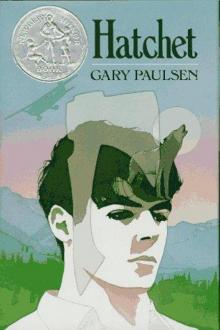 Hatchet br-1
Hatchet br-1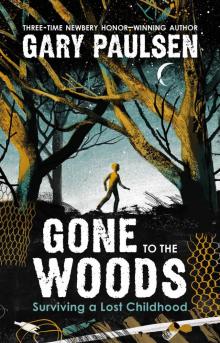 Gone to the Woods
Gone to the Woods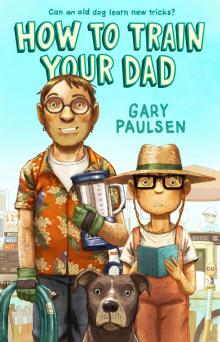 How to Train Your Dad
How to Train Your Dad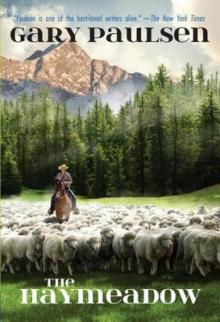 The Haymeadow
The Haymeadow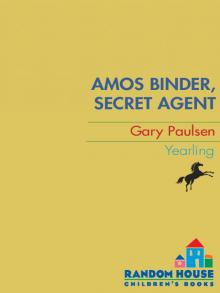 Amos Binder, Secret Agent
Amos Binder, Secret Agent The River br-2
The River br-2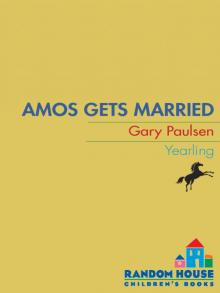 Amos Gets Married
Amos Gets Married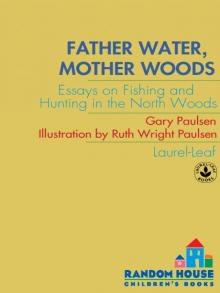 Father Water, Mother Woods
Father Water, Mother Woods Dunc and the Scam Artists
Dunc and the Scam Artists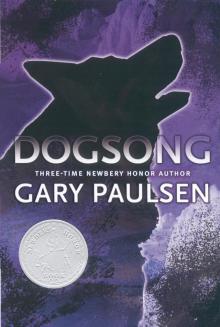 Dogsong
Dogsong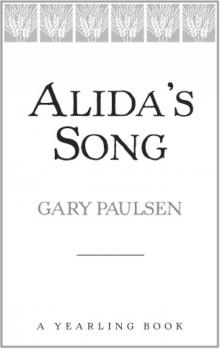 Alida's Song
Alida's Song The Wild Culpepper Cruise
The Wild Culpepper Cruise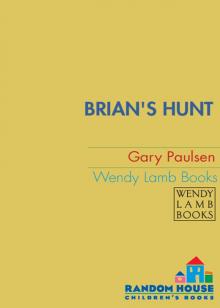 Brian's Hunt
Brian's Hunt Woods Runner
Woods Runner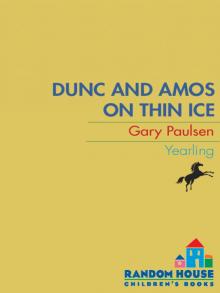 Dunc and Amos on Thin Ice
Dunc and Amos on Thin Ice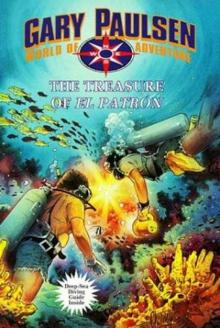 The Treasure of El Patron
The Treasure of El Patron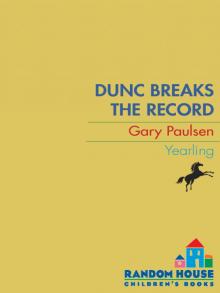 Dunc Breaks the Record
Dunc Breaks the Record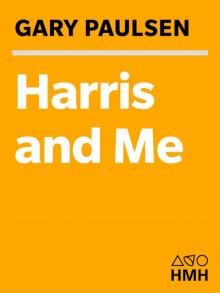 Harris and Me
Harris and Me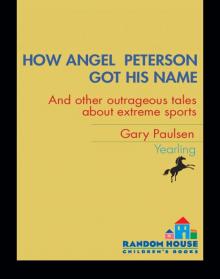 How Angel Peterson Got His Name
How Angel Peterson Got His Name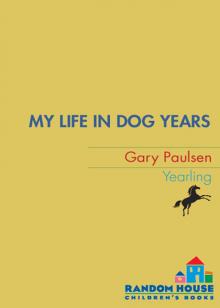 My Life in Dog Years
My Life in Dog Years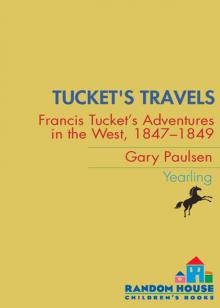 Tucket's Travels
Tucket's Travels Canyons
Canyons Dunc and the Flaming Ghost
Dunc and the Flaming Ghost The Schernoff Discoveries
The Schernoff Discoveries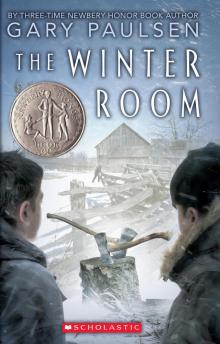 The Winter Room
The Winter Room Road Trip
Road Trip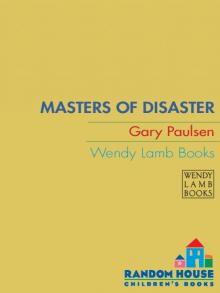 Masters of Disaster
Masters of Disaster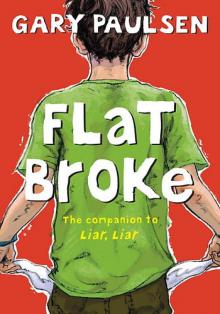 Flat Broke
Flat Broke Dunc and Amos Hit the Big Top
Dunc and Amos Hit the Big Top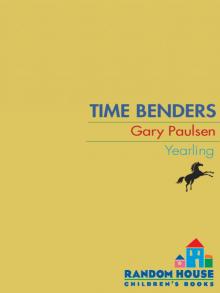 Time Benders
Time Benders Caught by the Sea
Caught by the Sea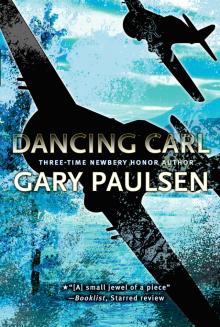 Dancing Carl
Dancing Carl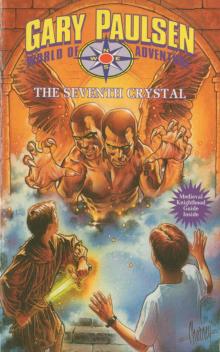 The Seventh Crystal
The Seventh Crystal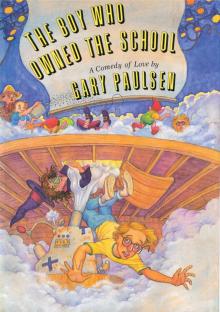 The Boy Who Owned the School
The Boy Who Owned the School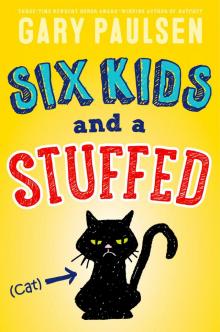 Six Kids and a Stuffed Cat
Six Kids and a Stuffed Cat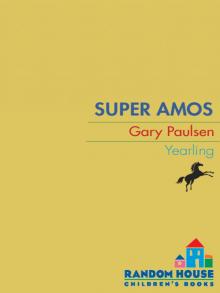 Super Amos
Super Amos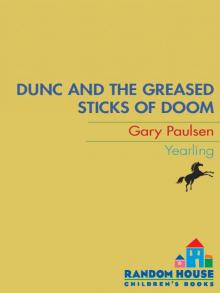 Dunc and the Greased Sticks of Doom
Dunc and the Greased Sticks of Doom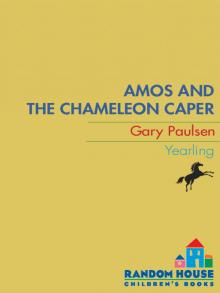 Amos and the Chameleon Caper
Amos and the Chameleon Caper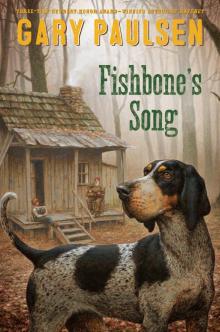 Fishbone's Song
Fishbone's Song Curse of the Ruins
Curse of the Ruins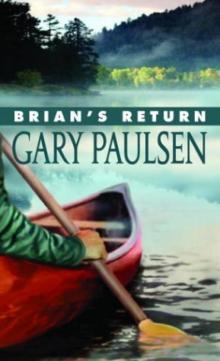 Brian's Return br-4
Brian's Return br-4 Molly McGinty Has a Really Good Day
Molly McGinty Has a Really Good Day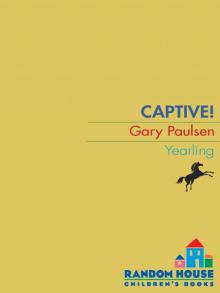 Captive!
Captive! Culpepper's Cannon
Culpepper's Cannon The Car
The Car Puppies, Dogs, and Blue Northers
Puppies, Dogs, and Blue Northers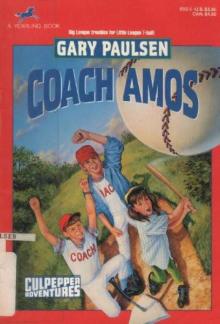 Coach Amos
Coach Amos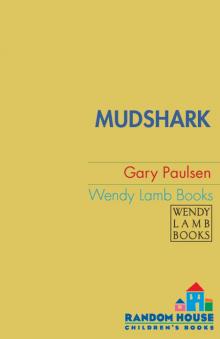 Mudshark
Mudshark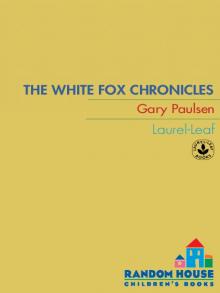 The White Fox Chronicles
The White Fox Chronicles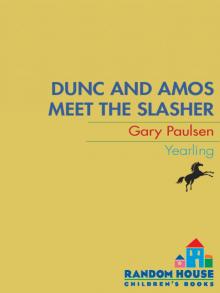 Dunc and Amos Meet the Slasher
Dunc and Amos Meet the Slasher Field Trip
Field Trip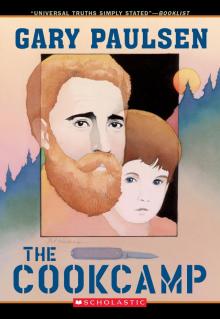 The Cookcamp
The Cookcamp Crush
Crush Lawn Boy Returns
Lawn Boy Returns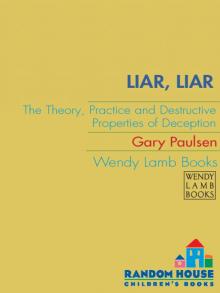 Liar, Liar k-1
Liar, Liar k-1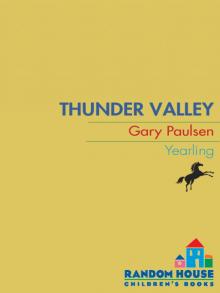 Thunder Valley
Thunder Valley The Tent
The Tent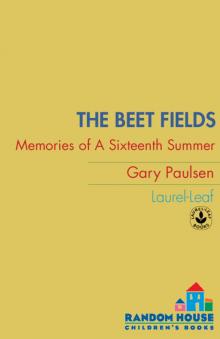 The Beet Fields
The Beet Fields The Creature of Black Water Lake
The Creature of Black Water Lake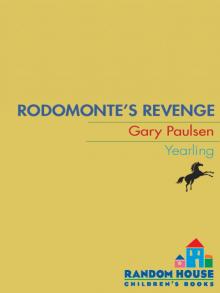 Rodomonte's Revenge
Rodomonte's Revenge Guts
Guts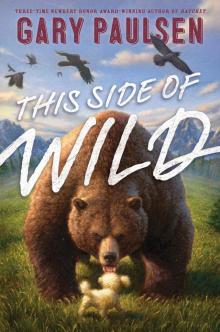 This Side of Wild
This Side of Wild The Rifle
The Rifle The Time Hackers
The Time Hackers Amos Goes Bananas
Amos Goes Bananas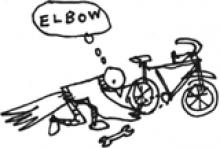 The Amazing Life of Birds
The Amazing Life of Birds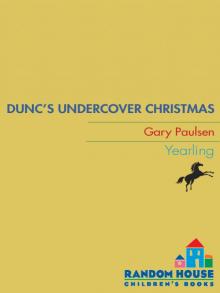 Dunc's Undercover Christmas
Dunc's Undercover Christmas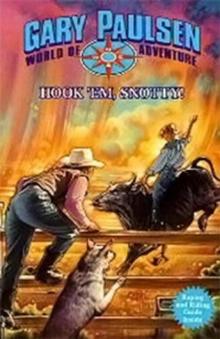 Hook 'Em Snotty
Hook 'Em Snotty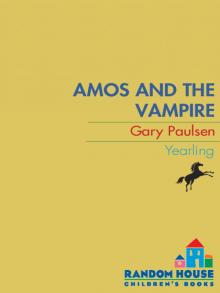 Amos and the Vampire
Amos and the Vampire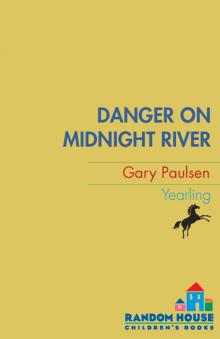 Danger on Midnight River
Danger on Midnight River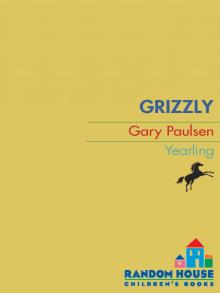 Grizzly
Grizzly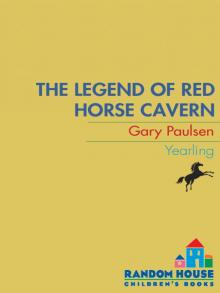 The Legend of Red Horse Cavern
The Legend of Red Horse Cavern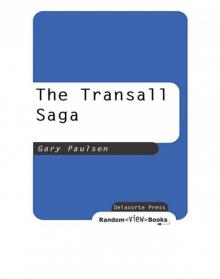 The Transall Saga
The Transall Saga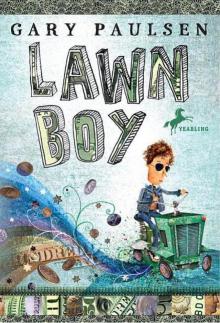 Lawn Boy
Lawn Boy The Case of Dunc's Doll
The Case of Dunc's Doll A Christmas Sonata
A Christmas Sonata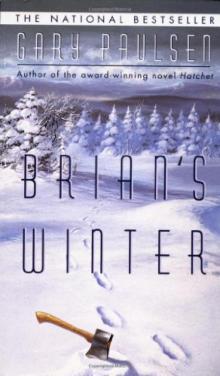 Brian's Winter br-3
Brian's Winter br-3 Vote
Vote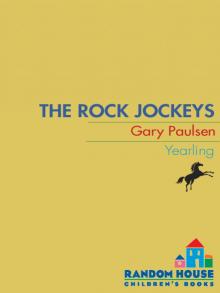 The Rock Jockeys
The Rock Jockeys Nightjohn
Nightjohn Escape from Fire Mountain
Escape from Fire Mountain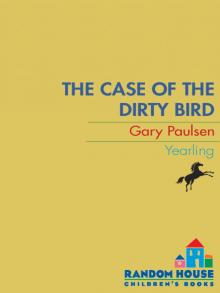 The Case of the Dirty Bird
The Case of the Dirty Bird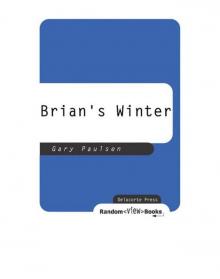 Brian's Winter
Brian's Winter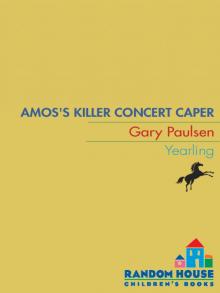 Amos's Killer Concert Caper
Amos's Killer Concert Caper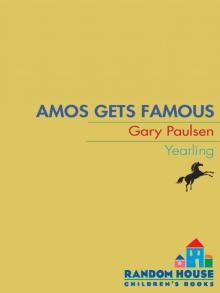 Amos Gets Famous
Amos Gets Famous Brian's Return
Brian's Return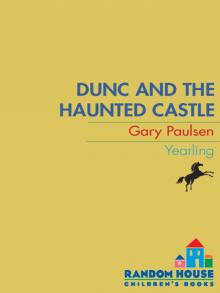 Dunc and the Haunted Castle
Dunc and the Haunted Castle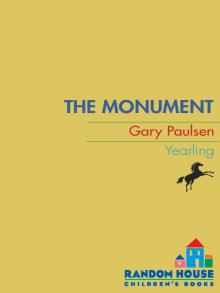 The Monument
The Monument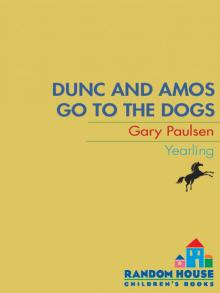 Dunc and Amos Go to the Dogs
Dunc and Amos Go to the Dogs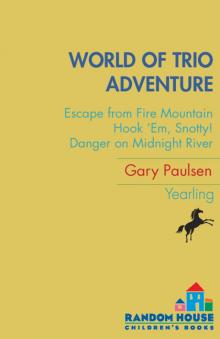 World of Adventure Trio
World of Adventure Trio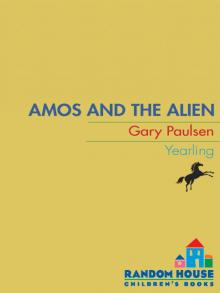 Amos and the Alien
Amos and the Alien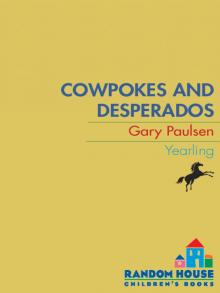 Cowpokes and Desperadoes
Cowpokes and Desperadoes Dunc and Amos and the Red Tattoos
Dunc and Amos and the Red Tattoos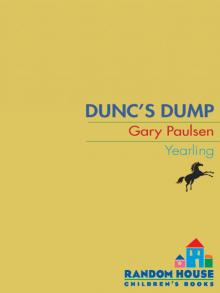 Dunc's Dump
Dunc's Dump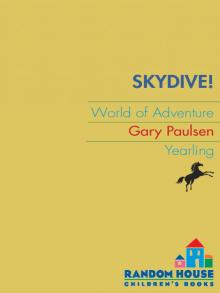 Skydive
Skydive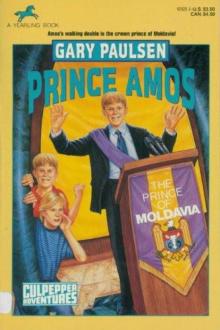 Prince Amos
Prince Amos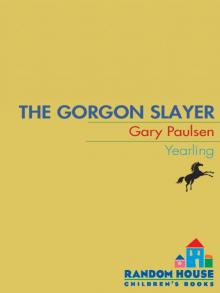 The Gorgon Slayer
The Gorgon Slayer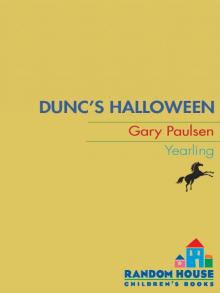 Dunc's Halloween
Dunc's Halloween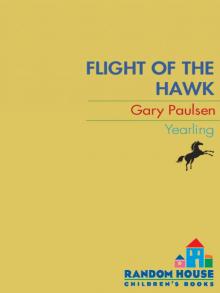 Flight of the Hawk
Flight of the Hawk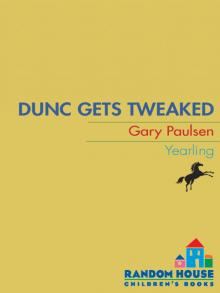 Dunc Gets Tweaked
Dunc Gets Tweaked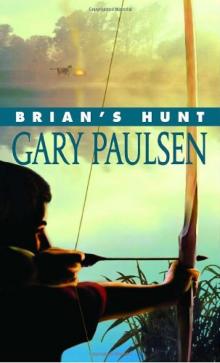 Brian's Hunt br-5
Brian's Hunt br-5 The Night the White Deer Died
The Night the White Deer Died